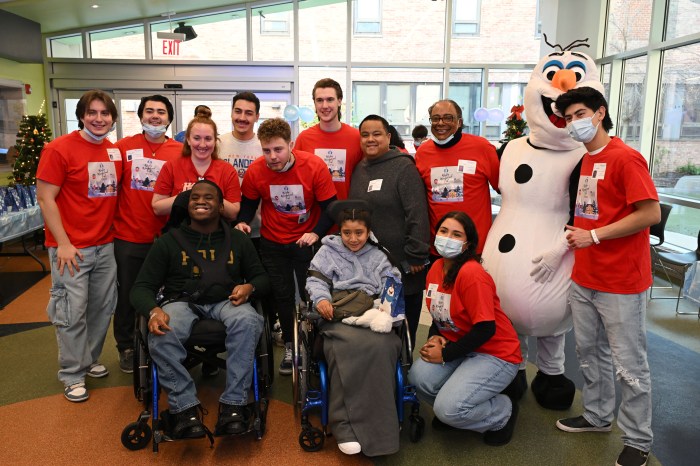Cheyenne Hua has won national recognition for her innovative inventions aimed at putting the brakes on speeding and getting to the bottom of home flooding — and she’s only 14.
The Bayside whiz kid took home a second place victory in the 13th annual Discovery Education 3M Young Scientist Challenge — the leading national science competition for students in grades five through eight — on October 5. She also won a $1,000 cash prize and a trip to Costa Rica.
“It feels really good to have won second place because all the other finalists were very, very smart. To have such a high ranking among them is awesome,” said Hua, a ninth grader at Hunter College Junior High School.
Hua landed a spot in the top 10 finals with her “smart speed-bump” idea. Her model essentially places two undetected bumps inside the road. When a car passes over the first bump, sensors in the road will recognize if the car is speeding. Then, a timed lever raises up the second bump which pops up to slow down drivers.
She said she was inspired by a fatal crash caused by drag racers two years earlier outside her home on Francis Lewis Boulevard — which she says is a problematic zone for speeders.
“I just wanted to come up with a better solution than the current ones. Some models of cars can’t go over speed bumps. The ones that exist now just sit there, and every car has to suffer through the giant bump. With my invention, only the cars that speed have to go over it,” she said.
Hua’s second invention — a flood protection system — was what helped her land the runner-up win. She worked with a scientist-mentor from the program throughout the summer to develop the project before her final presentation in October.
The invention equips new homes with an adhesive based sheet of waterproof fabric that goes around the house foundation. A ring floats around the top, and when water from the flood comes in, the ring rises and so does the fabric, Hua said. It prevents water from entering the home.
“This past summer, there’s been a lot of flooding. Even though I wasn’t affected, I saw around the news that a lot of people were,” she said. “I just wanted to come up with a system that would be helpful and that people could use to prevent flood damage.”
Although Hua didn’t take home the grand prize, Mary Rollins, vice president of Corporate Education Partnerships and also one of the judges, said it was a close win.
“The judges deliberated for several hours. We’re saying very honestly and openly that this year’s competition was tighter than ever,” she said. “Cheyenne was a really amazing young lady — very composed and incredibly equipped with a strong science background. She’s exactly the kind of student we want when we think of these contests.”
Hua flew to St. Paul, Minnesota — the farthest she’s ever been in the United States — to present her project to a panel of Discovery Education and 3M judges. She also had to answer a series of questions about her project at the end of her five-minute demonstration.
“It was kind of nerve-racking, and I was really relieved when it was finished,” she said. “But it was a great experience.”
Hua, who wants to be an engineer in the future, said she missed three days of school, and is just about finished catching up on the heavy work load.
“It was definitely worth it — especially meeting such cool, awesome people like the mentors, the judges and my fellow finalists. I made great friends. I don’t think I would have met anyone like that through the normal process of life,” said Hua, who still keeps in touch with the other finalists via email.
Hua said she has more inventions under her sleeve and hopes to expand and improve her speed-bump and flood protection ideas.
“I could see Cheyenne working in the field of science and really focusing on real world science, looking for a way to come up with real solutions for real world problems,” Rollins said. “I could see her using science to solve some of our greatest world challenges in the future.”



































